Ireland's ancient sites prove to be some of the best places in the country to tour.
As a New Yorker born and raised, I’m endlessly surprised when traveling abroad at how significantly I need to recalibrate my sense of what “old” means. The earliest buildings and streets of my city, which I typically regard with quiet awe, are mere children, built in the 1600s, in comparison with their medieval or even Iron Age counterparts elsewhere around the world.
In Ireland, I’ve felt this especially keenly. Dublin might now be home to the European headquarters of Google and Twitter, but meander away from the Docklands office buildings and you’ll find yourself walking along Fishamble Street – thought to be the oldest street in the city – to Woodquay, the site of a Viking settlement, dating back to the 10th century.
Hop on a 45-minute bus ride out of the city, and you can travel even further back in time to the Neolithic site of Newgrange, the passage tomb complex that’s older than the pyramids of Egypt.
Ireland’s Ancient East – the region encompassing the areas outside of Dublin to the north, west, and south, and east of the River Shannon, reaching from Cavan to Cork City to eastern Limerick – is the part of Ireland where history is the most palpable and accessible. From the very first cities in all of Ireland to ancient castles, ring forts, and monasteries, the Ancient East hums to the tune of 5,000 years of history you can still see and experience for yourself.
Ancient sites to visit in Ireland:
Prehistoric and historic settlements, the seat of Ireland’s High Kings, sites of monastic learning, and more – catch a glimpse of ancient Ireland at these magnificent sites:
Hill of Tara
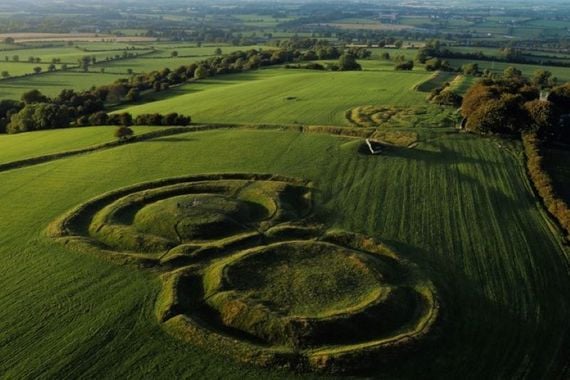
The Hill of Tara, County Meath.
Less than an hour’s drive outside of Dublin, the Hill of Tara was the seat of Ireland’s ancient High Kings, chosen as a sacred and special site by the early Irish who settled there 6,000 years ago. One hundred and forty-two high kings were crowned there, at the Stone of Destiny, during its years as the seat of power. You can still see and touch it today, in addition to other astounding sections of the Hill of Tara complex, including a megalithic burial tomb known as The Mound of the Hostages, and the ring fort, which served as a royal enclosure called Cormac’s House.
Newgrange
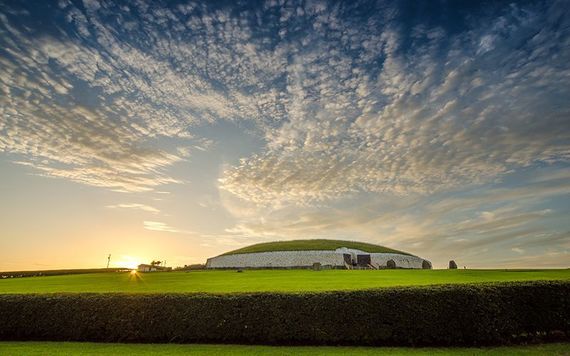
Newgrange, in the Boyne Valley, County Meath.
A mere half-hour drive from the Hill of Tara is Newgrange, the 5,000-year-old passage tomb ingeniously designed to be illuminated with sunlight each year on the Winter Solstice. Newgrange is the crown jewel of the Boyne Valley area, home to so much of Ireland’s history. Newgrange, built by Stone Age farmers in 3,200 BC, is a stunning feat of ancient engineering and a moving tribute to the dead of a long-gone society.
The Abbey of Kells
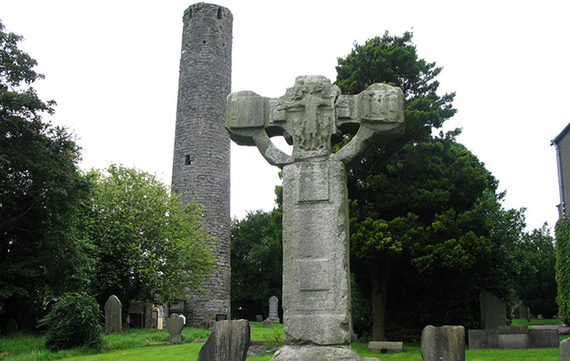
Kells Abbey and Monastery. Photo: Tourism Ireland
In the lovely town of Kells, Co. Meath lies one of Ireland’s most important monastic sites, the Abbey of Kells. Its origin story is that it was originally built in the 6th century by St. Columba, who was given the land by High King Diarmuid Mac Carroll, and then became a place of refuge for monks fleeing Viking raids on the Iona monastery in the 9th century. Ireland’s most famous illuminated manuscript, the Book of Kells, was crafted here by generations of monks.
Glendalough
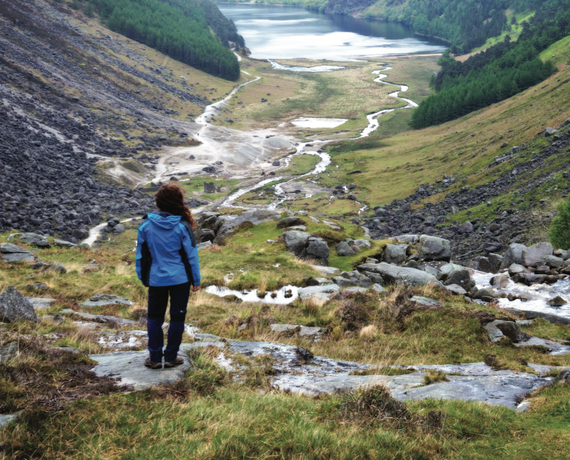
Glendalough Valley, County Wicklow.
An early Medieval monastic settlement in Ireland’s Garden County, Wicklow, Glendalough is one of the most stunningly beautiful sites in all of Ireland. Located in the Wicklow Mountains National Park, the “valley of the two lakes” is home to an ancient monastic city and surviving round tower. The settlement was founded by St. Kevin in the 5th century and was re-built throughout the 10th and 12th centuries. Today you can tour what remains of the monastic city, in addition to a visitor center, and take walks and hikes with unparalleled views – all just one hour south of Dublin.

Are you planning a vacation in Ireland? Looking for advice or want to share some great memories? Join our Irish travel Facebook group.
Castles to visit in Ireland:
There are an estimated 30,000 castles and castle ruins in Ireland, from a range of eras in history. Ireland’s Ancient East has some especially spectacular examples which you won’t want to miss.
Trim Castle
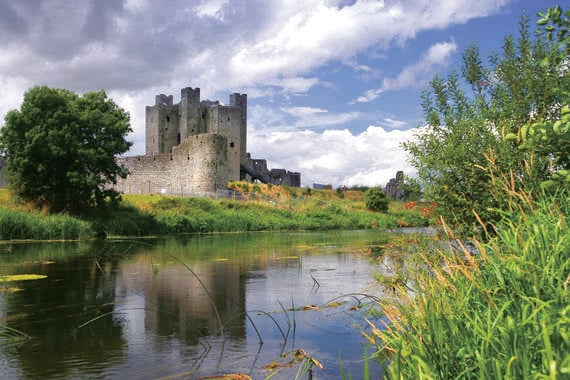
Trim Castle, in the Boyne Valley.
Are you a fan of the movie "Braveheart"? Then Trim Castle in Co. Meath is a must-see. The Anglo-Norman castle – the largest Norman castle in all of Ireland – was built over a thirty-year period in the late 12th century by Hugh de Lacy and his family. It sits on the southern bank of the River Boyne, less than an hour’s journey from Dublin.
Slane Castle
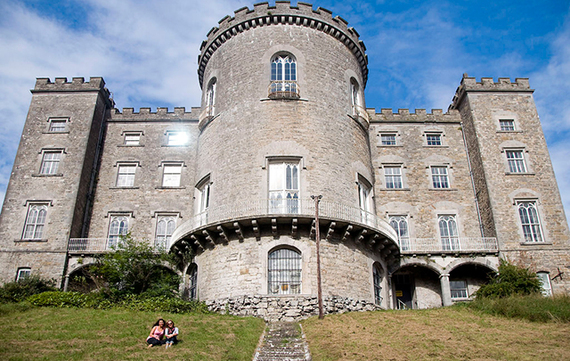
Slane Castle. Photo: Tourism Ireland
Whether you’re looking to go to the best music festival of your life, immerse yourself in a segment of Irish history, or sample some delectable whiskey, Slane Castle has something for you. Just a 25-minute journey from Dublin Airport, Slane is located in the Boyne Valley, just upstream from Newgrange and the site of the Battle of the Boyne. It has been lovingly owned by the Conyngham family since the 18th century. Today you can tour the grounds, attend the world-famous Slane Music Festival, or take a tour of the recently opened Slane Distillery.
Rock of Dunamase
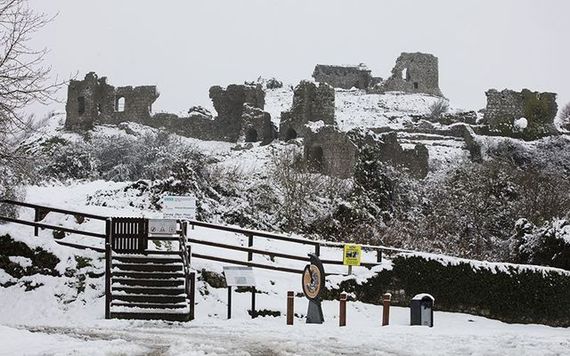
Rock of Dunamase.
The Rock of Dunamase stands in Co. Laois, overlooking the Valley of the O’Moores. It is a breathtaking site, and it has seen much history. Dunamase, just outside Portlaoise, began its built history as a Christian settlement which was then raided by Vikings in the mid-800s. It was an Anglo-Normal stronghold and became an important bargaining chip in weddings of the day. Though Dunamase was nearly destroyed during the Cromwellian invasions of the 1600s, visitors can still see what remains, not to mention the same stunning views beheld by any Norman, Viking or medieval Irish ancestors.
Rock of Cashel
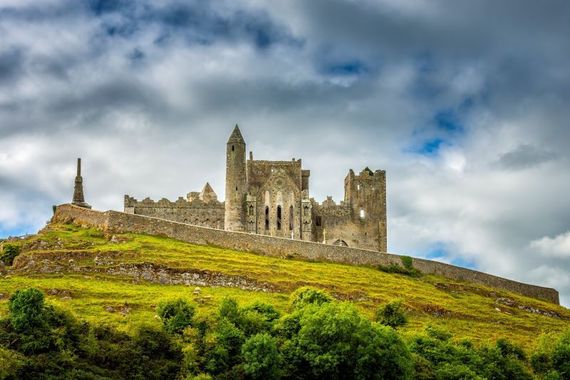
Rock of Cashel, County Tipperary.
The Rock of Cashel is one of the most iconic castles in all of Ireland. Sitting atop a spectacular hill in Cashel, Co. Tipperary, the Rock of Cashel – also known as Cashel of the Kings and St. Patrick’s Rock – was the seat of the High Kings of Munster. Many of the buildings that still stand today, however, were built in the 12th and 13th centuries, such as the round tower, the cathedral and Cormac’s Chapel. Nearby Cashel town is an excellent jumping-off point for exploring more of lovely Co. Tipperary.
Visit Ireland's oldest cities and towns
Many towns and cities in Ireland date far back into history, but if you want a real sense of just how enduring Ireland’s civilized history is, the Ancient East is the place to explore. After all, Ireland’s oldest city is here.
Waterford
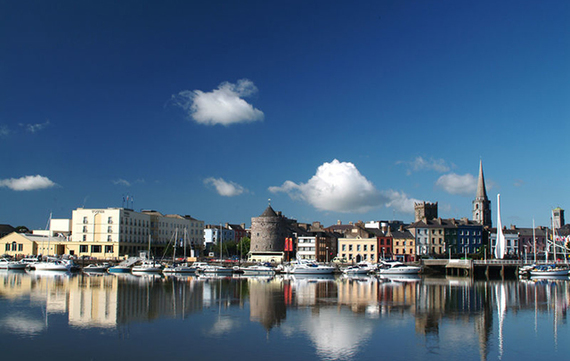
Waterford City quays. Photo: Tourism Ireland
Waterford was founded by Vikings on the banks of the River Suir in 914. The name comes from the Old Norse Veðrafjǫrðr. The city has seen many iterations throughout its history, from a major Anglo-Norman invasion in the 1100s to Catholic and Protestant influences, to trading with foreign lands such as Newfoundland. Today, this thriving hub still pays homage to its Viking and Middle Ages roots – in particular after celebrating its 1,100th anniversary in 2014. Stroll through Waterford’s Viking Triangle, visit Reginald’s Tower named for the Viking Ragnall, or visit the city’s Medieval Museum to truly immerse yourself. To get in touch with the city’s Viking roots, you can also visit “King of the Vikings,” an exciting 3D virtual reality experience in a recreation of a Viking house in Waterford cities Viking Triangle.
Kilkenny
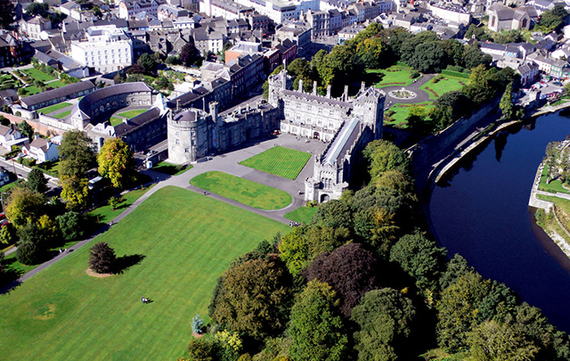
Kilkenny Castle from above. Photo: Tourism Ireland
Just a 45-minute drive north of Waterford sits one of Ireland’s most important Medieval towns, Kilkenny. Here, the old and the modern meet: tour Kilkenny Castle, built in 1195 by Norman conquerors and still just as grand today, stay in Kyteler’s Inn – the site of Ireland’s first witch trial in 1324, or stop by the world-famous Kilkenny Design for crafts and wares designed by some of Ireland’s most talented contemporary artisans. Get immersed in Kilkenny’s brewing history at Smithwick’s Brewery Experience. The home of the famous ale offers tours that begin with stories of local monks in the year 1231 who found a way to purify contaminated water from the local well by crafting it into the Smithwick’s we love today.
Limerick
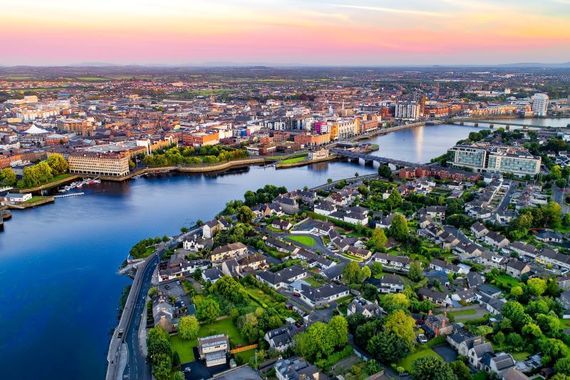
Limerick City.
Another of Ireland’s Medieval wonders, Limerick City sits on the banks of the River Shannon Estuary, just a half hour’s journey from Shannon Airport. The third-largest city in Ireland, Limerick dates back to Ireland’s pre-Viking era but was destroyed in a conquest in 812. In the 12th century, it was then rebuilt by the Normans who added structures you can still visit today, such as King John’s Castle on King’s Island and St. Mary’s Cathedral. Like a phoenix rising from the ashes, Limerick underwent many invasions and pillagings in its centuries but has always emerged stronger and with even more character. Most recently, the city developed a rougher reputation in the mid-late 1900s, perhaps best captured by Frank McCourt’s Angela’s Ashes, but swiftly built up its cultural draws and was named Ireland’s first-ever City of Culture in 2014. Today you can explore each era of its history, from King John’s Castle to the Frank McCourt Museum to People’s Park and the Hunt Museum.
Cork
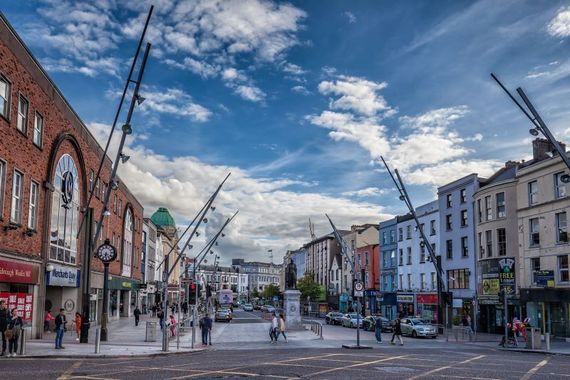
Cork city center.
One of the southernmost points in Ireland’s Ancient East region, Cork City must not be forgotten. This utterly enchanting city on the River Lee was – like so many other places in Ireland – originally a monastic settlement but the groundwork was laid for its cityhood by the Vikings, who saw it as a valuable port city. Cork became known as the Rebel City for its role in the 15th-century War of the Roses, and some residents even refer to it as Ireland’s “real capital.” A university city, Cork offers an abundance of things to do, from its famous annual jazz festival to St. Finbarr’s Cathedral, to the English Market, to the Cork Butter Museum.
This post is proudly produced in partnership with Tourism Ireland. Find out more on Ireland.com
Are there other sites in Ireland where you’ve felt history come alive? Let us know in the comment section!
* Originally published in 2019, updated in Sept 2024.
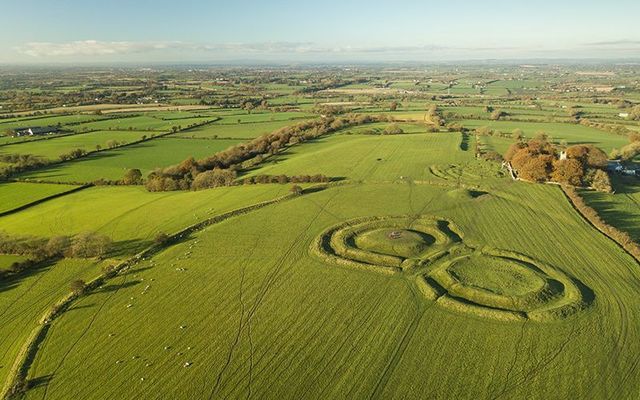


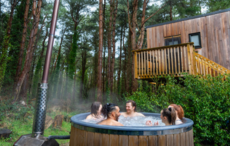
Comments